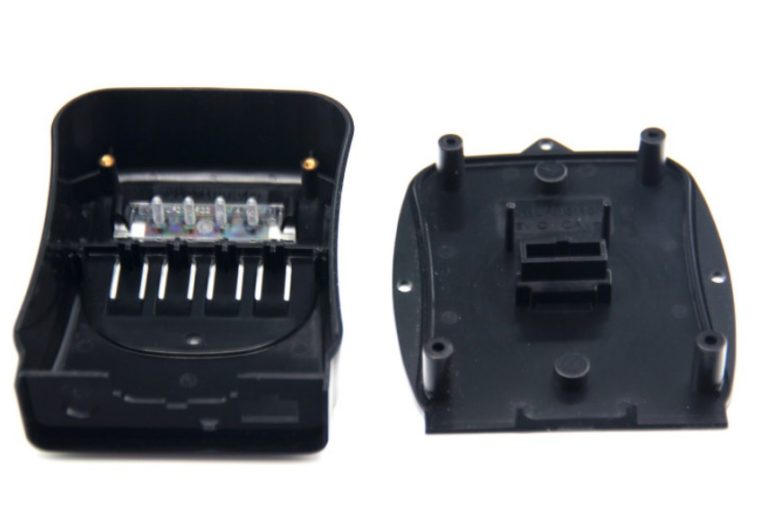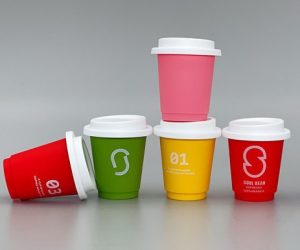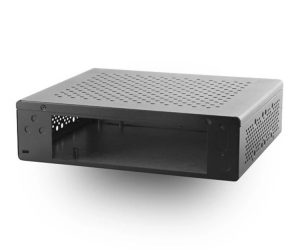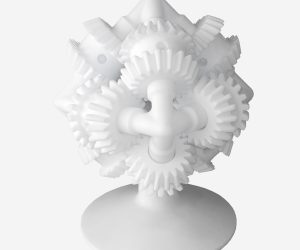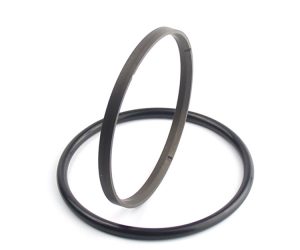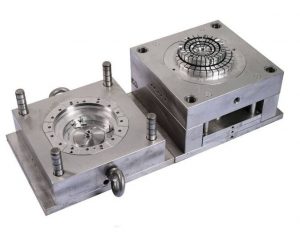Introduction
The Ubiquitous Plastic in Manufacturing
In today's manufacturing landscape, plastic is everywhere. Walk into any electronics store, and you'll find that the casings of smartphones, tablets, and laptops are predominantly made of plastic. Look under the hood of a car, and you'll discover numerous plastic components. Injection molded plastic, in particular, has become an integral part of modern manufacturing processes, revolutionizing the way products are made across a wide range of industries. From the tiniest gears in a watch to large automotive parts, injection molded plastic has made its mark.
The process of injection molding has been around for over a century, but recent technological advancements have propelled it to new heights. It involves melting plastic pellets and injecting the molten material into a mold cavity under high pressure. Once the plastic cools and solidifies, the mold is opened, and the finished product is ejected. This seemingly simple process has a profound impact on manufacturing, and in the following sections, Yigu Technology will explore how it is revolutionizing the industry in various ways.
I. The Basics of Injection Molded Plastic
What is Injection Molding?
Injection molding is a manufacturing process that has become the backbone of modern plastic product production. At its core, it is a method of shaping plastic materials into a wide variety of products with high precision and efficiency. The process begins with plastic granules, which are commonly made from polymers such as polyethylene, polypropylene, or acrylonitrile butadiene styrene (ABS). These granules are fed into the hopper of an injection molding machine.
Inside the machine, the plastic granules are heated to a molten state. This is achieved through the use of heating elements that surround the barrel where the plastic is processed. Once the plastic reaches its melting point, it becomes a viscous, flowing substance. A screw or a plunger then exerts high pressure on the molten plastic. This pressure forces the plastic through a nozzle and into a closed mold cavity. The mold cavity is designed to have the exact shape of the final product, whether it's a small toy part, a complex automotive component, or a consumer electronics enclosure.
After the mold cavity is filled with the molten plastic, it is left to cool. This cooling process can be facilitated by circulating a coolant, usually water, through channels within the mold. As the plastic cools, it solidifies, taking on the shape of the mold cavity. Once the plastic has fully solidified, the mold opens, and the finished product, now in the form of an injection - molded plastic part, is ejected. This entire process is highly automated in modern manufacturing facilities, allowing for rapid production of large quantities of identical parts.
Materials Used in Injection Molding
There is a vast array of plastic materials used in injection molding, each with its own unique set of properties and applications.
Polyethylene (PE): This is one of the most commonly used plastics in injection molding. It comes in different grades, such as high - density polyethylene (HDPE) and low - density polyethylene (LDPE). HDPE is known for its high strength, chemical resistance, and toughness. It is often used in applications like making milk jugs, pipes, and industrial containers. LDPE, on the other hand, is more flexible and transparent. It is used in the production of plastic bags, squeeze bottles, and some types of food packaging. For Yigu Technology example, the thin, flexible plastic bags used in grocery stores are typically made from LDPE.
Polypropylene (PP): PP has excellent chemical resistance, high heat resistance compared to some other plastics, and good mechanical properties. It is a lightweight material, which makes it ideal for applications where weight is a concern. PP is commonly used in the automotive industry for interior components like dashboard parts, as well as in the production of food containers, such as yogurt cups and reusable storage containers. It can withstand high temperatures during sterilization processes, making it suitable for food - related applications.
Acrylonitrile Butadiene Styrene (ABS): ABS is a versatile plastic with a combination of good impact resistance, rigidity, and dimensional stability. It is widely used in the electronics industry for manufacturing the casings of smartphones, tablets, and laptops. ABS can also be easily colored, which is an advantage when it comes to creating products with different aesthetic requirements. For instance, the sleek, shiny outer shells of many consumer electronics devices are often made from ABS in various colors.
Polycarbonate (PC): PC is known for its high strength, transparency, and heat resistance. It has excellent impact resistance, making it suitable for applications where durability is crucial. PC is used in the production of safety helmets, eyewear lenses, and automotive headlight lenses. Its transparency allows for clear visibility, while its strength ensures that it can withstand significant forces without breaking.
Polyethylene Terephthalate (PET): PET is commonly used in the packaging industry, especially for making bottles for beverages, such as water, soda, and juice. It is a lightweight, strong, and transparent plastic. PET is also recyclable, which makes it an environmentally friendly choice for many packaging applications. The clear, lightweight bottles that we see on store shelves are often made from PET resin that has been injection - molded into the desired bottle shape.
The following Yigu Technology table provides a quick comparison of some key properties of these common injection - molding plastics:
| Plastic Material | Impact Resistance | Heat Resistance | Chemical Resistance | Transparency | Common Applications |
| Polyethylene (PE) - LDPE | Good (flexible) | Low | Good | Translucent | Plastic bags, squeeze bottles |
| Polyethylene (PE) - HDPE | High (tough) | Moderate | Excellent | Opaque | Milk jugs, pipes |
| Polypropylene (PP) | Moderate | High | Good | Translucent to opaque | Automotive interior parts, food containers |
| Acrylonitrile Butadiene Styrene (ABS) | High | Moderate | Good | Opaque | Electronics casings |
| Polycarbonate (PC) | Very high | High | Good | Transparent | Safety helmets, eyewear lenses |
| Polyethylene Terephthalate (PET) | Moderate | Moderate | Good | Transparent | Beverage bottles |
II. Advantages that Drive the Revolution
High - Precision Manufacturing
One of the most remarkable aspects of injection molded plastic is its ability to achieve high - precision manufacturing. In the production of components for precision electronics, such as the connectors in a smartphone or the tiny gears in a smartwatch, injection molding shines. For Yigu Technology example, when manufacturing the internal components of a high - end earbud, the injection - molded plastic parts need to fit together with extreme precision to ensure proper functionality and a sleek, compact design.
Traditional manufacturing methods often struggle to achieve the same level of precision. Machining processes like milling or turning might have a tolerance range of ±0.1 - 0.5 mm, depending on the complexity of the part and the equipment used. In contrast, injection molding can achieve tolerances as low as ±0.01 - 0.05 mm. This high precision not only ensures that the parts fit together perfectly during assembly but also contributes to the overall performance and reliability of the final product. For instance, in the production of medical devices, where components need to work together flawlessly, the high precision of injection - molded plastic parts is crucial. A misaligned or poorly - fitting component in a syringe or a diagnostic device could lead to inaccurate results or even endanger the patient.
Cost - Efficiency
Injection molded plastic offers significant cost - efficiency, especially in large - scale production. When manufacturing a large number of identical parts, the cost per unit can be greatly reduced. For Yigu Technology example, if a company is producing 100,000 plastic toy parts, the initial investment in the injection mold might seem substantial. However, as the number of parts produced increases, the cost of the mold is spread out over a larger quantity of products.
Modern injection molds can have a long lifespan. High - quality steel molds, which are commonly used, can produce hundreds of thousands or even millions of parts before they need to be replaced. This long - term durability reduces the overall cost of production over time. According to industry data, a well - maintained injection mold for a simple plastic part can produce up to 500,000 - 1,000,000 parts, while molds for more complex parts can still produce 100,000 - 300,000 parts. In contrast, other manufacturing methods like 3D printing, which might be more suitable for small - batch production, have a much higher cost per unit for large - scale production due to the cost of materials and the relatively slow production speed.
Design Flexibility
The injection molding process allows for an incredible degree of design flexibility. Complex shapes that would be extremely difficult or even impossible to achieve with other manufacturing methods can be easily produced through injection molding. In the automotive industry, for example, the interior components such as dashboard panels and door trims often have complex, curved shapes with multiple integrated features like cup holders, storage compartments, and speaker grilles. Injection molding enables manufacturers to create these parts in one piece, reducing the need for multiple components and assembly steps.
Medical devices also benefit greatly from the design flexibility of injection - molded plastic. Devices like inhalers have intricate internal channels and chambers to ensure the accurate delivery of medication. These complex geometries can be precisely replicated in injection - molded plastic parts. Another example is prosthetics, where the outer casing needs to be both comfortable for the user and aesthetically pleasing. Injection molding allows for the creation of custom - shaped prosthetics that can be tailored to the individual needs of the patient, with features like textured surfaces for better grip or smooth contours for a natural look.
High Production Speed
Injection molding is renowned for its high production speed. Modern injection molding machines can produce parts at an astonishing rate. For small, simple plastic parts, such as bottle caps, an injection molding machine can produce up to 50 - 100 parts per minute. Even for more complex parts, production rates of 10 - 30 parts per minute are not uncommon.
Compared to other plastic - forming methods like blow molding, which is mainly used for producing hollow objects like bottles, injection molding is generally faster. Blow molding typically has a production rate of 5 - 20 parts per minute for small - to - medium - sized bottles, depending on the complexity of the bottle design and the equipment used. The high production speed of injection molding makes it ideal for industries with high - volume production demands, such as the consumer goods industry, where products like plastic utensils, toys, and household items need to be produced in large quantities to meet market needs.
III. Industry - Wide Impacts
Automotive Industry
In the automotive industry, injection molded plastic has become an indispensable material. It is widely used in the manufacturing of interior components, exterior parts, and even some engine components.
For interior components, injection - molded plastic is used to create dashboard panels, door trims, center consoles, and seat covers. These parts not only contribute to the aesthetic appeal of the vehicle's interior but also play a crucial role in providing a comfortable and functional driving experience. For Yigu Technology example, the dashboard panel, often made of injection - molded polypropylene, can be designed with various textures and finishes to match different vehicle models. It can also integrate features such as instrument clusters, air vents, and storage compartments, all in one piece, reducing the need for multiple components and assembly steps.
Exterior parts such as bumpers, fenders, and body panels are increasingly being made from injection - molded plastic. Polycarbonate - based composites are commonly used for these applications due to their high impact resistance and ability to maintain their shape even under extreme conditions. The use of injection - molded plastic in exterior parts has led to significant weight reduction. A study by an automotive research institute found that replacing traditional metal bumpers with injection - molded plastic bumpers can reduce the weight of the bumper by up to 40 - 50%. This weight reduction, in turn, improves fuel efficiency. For every 10% reduction in vehicle weight, fuel consumption can be decreased by about 6 - 8%, according to industry - wide data.
In the engine compartment, injection - molded plastic is used for components like air intake manifolds. These plastic manifolds can be designed with complex internal channels to optimize the flow of air into the engine, improving engine performance. They are also lighter than their metal counterparts, which helps in reducing the overall weight of the engine and the vehicle.
Consumer Electronics
In the consumer electronics field, injection molded plastic is a key material that enables the production of sleek, lightweight, and aesthetically pleasing products. Take smartphones, for instance. The outer casing of most smartphones is made from injection - molded plastic, usually ABS or polycarbonate. These materials offer a good balance of strength, impact resistance, and design flexibility.
Manufacturers can create thin, bezel - less designs with injection - molded plastic, meeting the consumer demand for ever - sleeker devices. The average thickness of a modern smartphone has decreased from around 10 - 12 mm a decade ago to 7 - 9 mm today, and injection - molded plastic plays a significant role in achieving this reduction. In addition, the ability to color - match and texture the plastic allows for a wide variety of design options. Some smartphones have a brushed - metal - like finish on their plastic casings, giving them a high - end look and feel.
Tablets also benefit from injection - molded plastic. The large, flat back covers and frames of tablets are often injection - molded. The light - weight nature of plastic makes tablets easy to carry around. A standard 10 - inch tablet with an injection - molded plastic body can weigh around 400 - 500 grams, which is much lighter than if it were made from metal. This weight reduction, combined with the design flexibility of injection - molded plastic, has made tablets popular for both personal and professional use.
Medical Field
In the medical field, injection molded plastic is used extensively in the production of both medical devices and disposable medical supplies.
For medical devices, such as insulin pens, inhalers, and diagnostic equipment, injection - molded plastic parts offer high precision and reliability. Insulin pens, for example, require components with tight tolerances to ensure accurate dosing of insulin. Injection - molded plastic parts can be produced with the necessary precision to meet these requirements. The transparency of some plastics like polycarbonate is also an advantage in medical devices. In a diagnostic device, a transparent plastic housing can allow for easy viewing of the internal components during operation.
Disposable medical supplies, such as syringes, IV tubes, and surgical masks, are also commonly made from injection - molded plastic. Polypropylene is a popular choice for these applications due to its excellent chemical resistance, biocompatibility, and low cost. The use of injection - molded plastic in disposable medical supplies ensures a high level of hygiene. These items are designed to be used once and then discarded, reducing the risk of cross - contamination. In addition, the design flexibility of injection - molding allows for customization. For example, syringes can be designed with different sizes, needle gauges, and features such as safety locks, all made possible by injection - molded plastic components.
VI. Conclusion
Injection molded plastic has undeniably brought about a revolution in the manufacturing industry. Its high - precision manufacturing capabilities, cost - efficiency, design flexibility, and high production speed have made it an essential part of modern manufacturing processes across multiple industries.
From the automotive industry, where it contributes to weight reduction and fuel efficiency, to the consumer electronics industry, enabling sleek and lightweight product designs, and the medical field, ensuring the production of high - precision and hygienic devices, injection - molded plastic has left its mark. The ability to produce parts with tight tolerances, the cost - effectiveness in large - scale production, and the freedom to create complex shapes have transformed the way products are designed and manufactured.
In Yigu Technology conclusion, injection - molded plastic will continue to play a crucial role in driving innovation and growth in the manufacturing industry, shaping the products of tomorrow.
FAQs
- What are the most common types of plastic materials used in injection molding?
The most common types include Polyethylene (PE) in high - density (HDPE) and low - density (LDPE) forms, Polypropylene (PP), Acrylonitrile Butadiene Styrene (ABS), Polycarbonate (PC), and Polyethylene Terephthalate (PET). Each has its own unique properties and applications, such as HDPE being used for milk jugs due to its strength, and ABS being popular for electronics casings for its impact resistance.
- How does injection - molded plastic contribute to cost - efficiency in manufacturing?
In injection - molded plastic production, the initial investment in the mold is spread out over a large number of parts as production volume increases. High - quality molds can have a long lifespan, producing hundreds of thousands or even millions of parts before replacement. This long - term durability, combined with high production speeds, reduces the cost per unit, making it cost - effective, especially for large - scale production.
- Can injection - molded plastic be used for highly complex and detailed parts?
Yes, injection - molded plastic is well - suited for highly complex and detailed parts. The process allows for a high degree of design flexibility, enabling the creation of intricate shapes, internal channels, and fine details. In industries like medical device manufacturing and automotive component production, injection - molded plastic parts with complex geometries are commonly produced to meet the specific requirements of the products.
